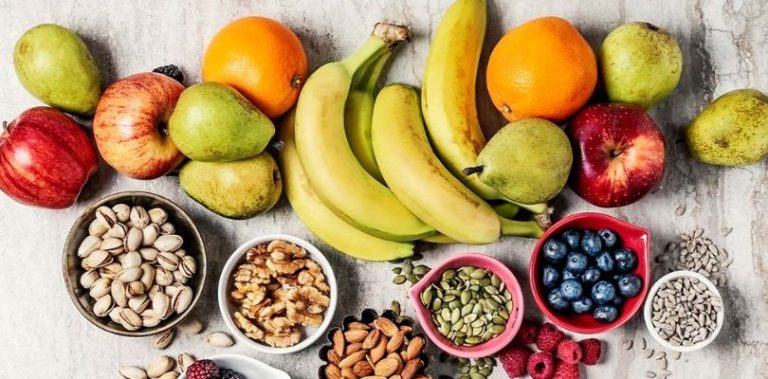Empowering Your Plate
Endometriosis is a painful, chronic condition where cells that are similar to endometrial cells that line the uterus grow outside of the uterus. Although the tissue can spread throughout the body, common areas of growth include the ovaries, fallopian tubes, bowel, bladder, vagina, cervix and the area between the rectum and vagina. This misplaced tissue builds up and tries to shed, similar to the tissue that lines the uterus during your menstrual cycles. However, the misplaced tissue has no way to exit the body, which leads to internal bleeding, bowel issues, inflammation, scar tissue, adhesions and infertility. For this article, we are going to focus on an anti-inflammatory diet for endometriosis. While there are other treatment plans, this particular diet may help reduce flare-ups.
About 1 in 10 women suffer from endometriosis in the U.S., but this number is likely an underrepresentation as many women go undiagnosed. If you suffer from endometriosis, research suggests that making simple changes to your diet to include anti-inflammatory foods may help to reduce endometriosis symptoms.
Top Foods to Include in an Anti-Inflammatory Diet for Endometriosis
1. Omega-3
Omega-3 fats help to calm endometriosis inflammation. Sources of omega-3s include:
- Fatty fish, including tuna, salmon and sardines.
- Nuts and seeds, including flaxseed, walnuts and chia seeds.
- Plant-based oils, including canola and flaxseed oil.
2. Mono-Unsaturated and Poly-Unsaturated Fats
These also have anti-inflammatory properties. Sources of mono-unsaturated and poly-unsaturated fats include:
- Nuts and seeds, including cashews, walnuts and almonds.
- Olive oil.
- Avocadoes.
- Peanut butter.
- Safflower oil.
Related Search Topics (Ads)
3. Vegetables
Veggies that are rich in carotenoids and flavonoids have antioxidant and anti-inflammatory properties. Healthy veggie options include:
- Dark, leafy greens, including collard greens, kale, Swiss chard and spinach.
- Cruciferous veggies, including cabbage, broccoli, bok choy, cauliflower and brussels sprouts.
- Colorful veggies, including carrots, beets, peas and squash.
- Turmeric and turmeric shots.
4. Fruits
Those that are rich in carotenoids and flavonoids have antioxidant and anti-inflammatory properties. Healthy fruit options include:
- Berries, including blueberries, strawberries and raspberries.
- Peaches, plums and nectarines.
- Oranges and pink grapefruit.
- Red grapes, cherries, pomegranates.
- Apples and pears.
5. Whole Grains
They have added B vitamins and fiber, which help to promote a healthy digestive tract and reduce spikes in blood sugar that can promote inflammation. Whole grain foods include:
- Rice, including brown rice, wild rice and basmati rice.
- Buckwheat, quinoa, steel-cut oats.
- Gluten-free pasta or noodles.
6. Magnesium-Rich Foods
Magnesium-rich foods help to relieve menstrual cramps, as magnesium is a natural muscle relaxer. Sources of magnesium include:
- Dark, leafy greens, including arugula, kale and spinach.
- Legumes, including edamame and black beans.
- Nuts and seeds, including pumpkin seeds and almonds.
- Dark chocolate (limit this to small portions because most chocolate has added sugar).
7. Zinc-Rich Foods
These help to regulate your menstrual cycles and balance hormones. Sources of zinc include:
- Poultry, including turkey and chicken.
- Shellfish, including lobster, oysters and crab.
- Lean red meat (limit to a maximum of two servings per week).
Foods to Avoid
Avoiding inflammation and estrogen-boosting foods can also help to manage your endometriosis symptoms as well. Try to limit or avoid the following foods:
- Alcohol: limit to one to two drinks per week.
- Caffeine: limit to 400 milligrams of caffeine or less per day.
- Fatty meat: while some red meat is good, limit overall saturated fat intake to a maximum of 10% of your daily calories.
- Processed foods: try to cut these out altogether as many processed foods contain inflammation-boosting ingredients like sugar, trans and saturated fats, and they are also low in good ingredients including magnesium, zinc, fiber and healthy fats.
- Sugary drinks: limit to 26 grams of sugar each day to help keep inflammation in check.
How an Anti-Inflammatory Diet Helps Endometriosis
High estrogen levels and inflammation in the body can worsen endometriosis symptoms. The food you eat plays an essential role in balancing estrogen and fighting inflammation, so consuming an anti-inflammatory diet may help to reduce the symptoms of endometriosis.
Symptoms of Endometriosis
Symptoms of endometriosis vary among women but tend to worsen around menstruation. Common symptoms can include the following:
- Pelvic pain with sexual intercourse.
- Pelvic pain before and during periods.
- Fatigue.
- Painful urination or bowel movements during periods.
- Heavy or prolonged menstrual flow.
- Bleeding between periods.
- Bloating.
- Severe menstrual cramping.
- Constipation or diarrhea.
- Lower back pain.
- Nausea.
- Infertility (if left untreated).
Inflammation Fighters
If you suffer from endometriosis, pay close attention to how your body reacts when you eat certain foods. Keeping a food diary may help identify foods that trigger your endometriosis symptoms.
If you are struggling to find a suitable diet to manage your symptoms, try meeting with a dietitian or nutritionist to help you develop a meal plan that works best for your condition and lifestyle.

